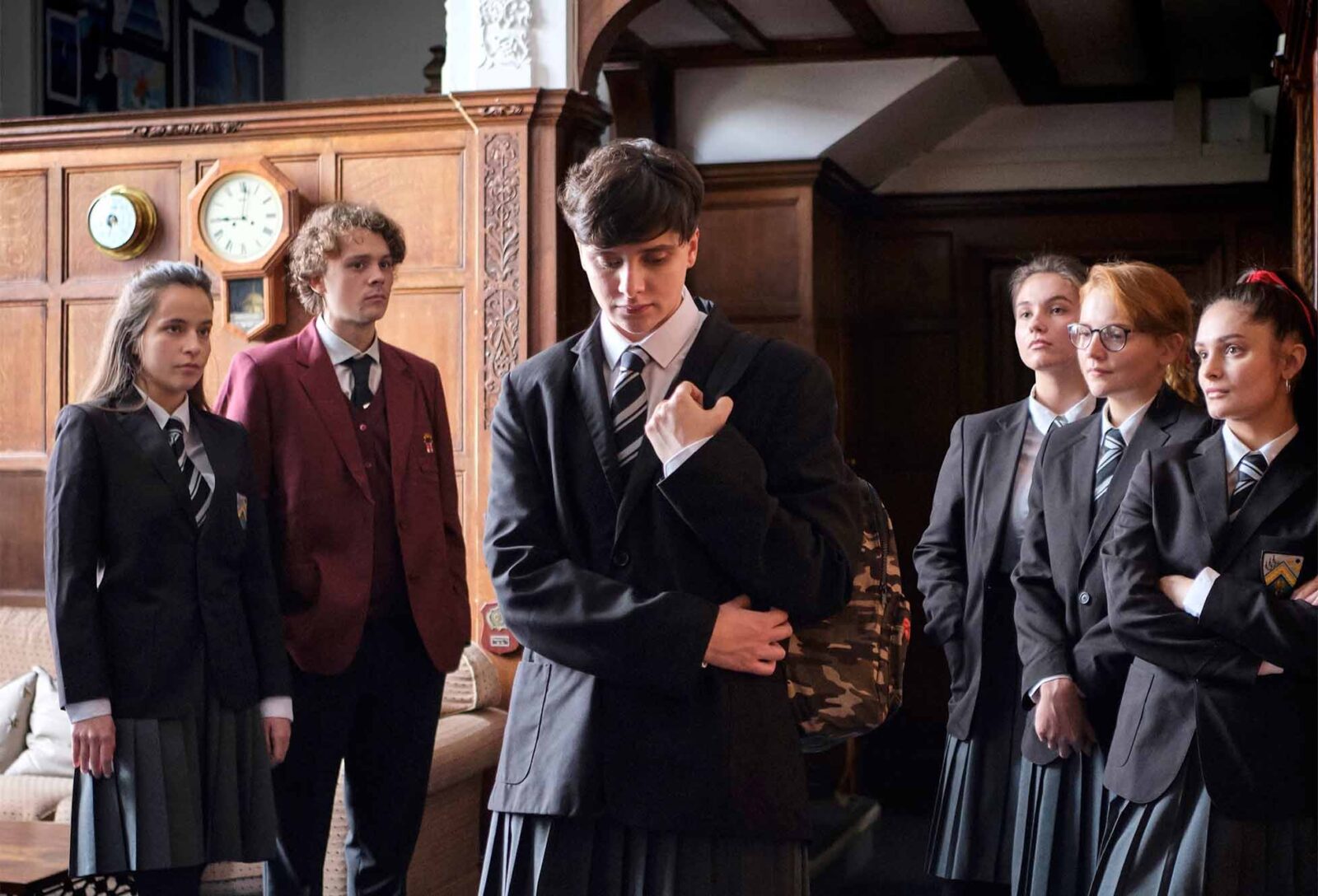A Short Glimmer of Hope
The Portrayal of Queer Mental Health in Short Film
In this paper, Laura Carluccio discusses how short films, within their brevity, can showcase the mental health aspects of queer people’s lives while holding a positive note for the future at the same time.

Introduction
While feature films mostly comply with the mainstream and therefore only hesitantly include diverse casts and certain topics, the short film has the option of doing just that. Short films are less expensive and usually take up less time to shoot, and therefore do not have the same financial pressure. Short films can be distributed on the internet, where, if you look for them, even niche topics can be found. The short film can experiment with the medium of film and depict topics that are not so common in the feature film. Due to their brevity, short films can focus more intently on a specific aspect. In this paper I talk about two of those topics, namely queer stories and mental health.
Mental health issues do not stop short at straight cis people but there are certain aspects like gender dysphoria that exclusively apply to the queer community. Queer youths often suffer from depression like their straight peers, but the reasons might be different. Additionally, queer characters in the media are mostly portrayed with stereotypes and with tragic stories. Tropes like “Bury Your Gays”, where queer characters always die at the end or experience some sort of a bad ending, are common in movies and suggest that being queer means suffering, undeserving of happiness, and it ends with death. However, it is important to talk about mental health issues while maintaining a positive outcome, suggesting that being queer does not equal eternal suffering and loneliness.
Mental health and the queer experience are complex topics involving various aspects, as you will see some of them discussed in this paper. Understandably, presenting this complexity is already a challenge, particularly when you have less time. Nonetheless, the short film’s time limitation may be why those topics can be presented, as they focus on specific aspects and highlight them.
In this paper, I argue that short films can showcase the mental health aspects of queer people within their brevity while having a positive note for the future at the same time. For this reason, I intentionally focus on short films featuring white main characters, as the experiences of queer people of colour may include aspects and struggles that white queer people might not encounter. While bringing intersectionality into consideration is important, it would not receive the spotlight it deserves within the limited space of this paper. I believe this is neither my place nor the primary focus of this paper. Even with a lot of research, it is likely that I will not be able to understand all the important nuances that are needed for a critical discussion involving mental health in queer people of colour. For this reason, this paper focuses on the white perspective, but researching other perspectives is equally important and needs to be discussed. The same applies to queer people with disabilities.
I chose five short films with queer main characters that contain mental health issues to some capacity, but also include a hopeful or somewhat positive aspect. When talking about a certain character, I will use the right term to describe them. Otherwise, I will mainly work with umbrella terms when talking about mental health issues within the queer community. The reason for this is that both sexuality and gender exist on a spectrum, and via umbrella terms, I want to make sure to include the whole spectrum. I will use the term “queer community” for all persons that identify with that group. When talking more specifically about transgender, I will use the term “trans*” to include the whole transgender spectrum, consisting of transgender, non-binary, gender-fluid, etc.
Editor’s note
by Laura Walde
In the spring semester of 2022, with my Ph.D. in film studies on the subject of brevity in film recently completed, I taught a seminar for Bachelor students at the Department of Film Studies of the University of Zurich. Twenty-five students signed up for this course that promised to introduce the world of short films from the perspective of its institutional linkages. Starting from the limited length of the short film, its marginalisation in film theoretical discourse, and its circulation in different institutional contexts, the seminar was dedicated to the specific formats and forms of presentation that the short film can take. It is also about the epistemic potential and implications of “brevity” as the undercutting of a norm on a cultural, social, and political level. The seminar aimed for students to become familiar with a broad corpus of historical and contemporary short films and to gain an overview of the still very limited academic research on short films.
The students were required to write seminar papers, and I contacted Talking Shorts early on to propose a collaboration for publishing those essays from the ones who were willing to write them in English and make an extra effort in preparing, writing, and revising their texts. The idea behind this collaboration is that there is hardly any opportunity to publish—and thus also read—in-depth analyses of short films in an academic context. This format—fifteen pages of text peppered with quotes from film theory and footnotes—is an unusual format for Talking Shorts, but we are excited to make some first steps in testing how longer, complex studies that go beyond a review of an individual film can be presented on a platform like this.
Free in their choice of topic, it is not surprising and indeed no coincidence to me that all three students chose to write on queer themes: 1) “The Portrayal of Queer Mental Health in Short Films”, 2) “The Powerful Queer Space in Naïla Guiguet’s ‘Dustin’” and 3) “Contrasting Double Features. On How the Combination of Contrast Programming and Double Features Can Elevate the Modern Queer Short Film Experience”. One of the significant points of discussion during the whole seminar was the political potential of short films to be disruptive, to question established codes and paradigms within the art of the films themselves, but also based on the fact that as short films, their place is in the offside of commercial and popular cinema culture.
The publication of these three essays coincides with a panel discussion on the topic of researching and writing about short films in academia at Internationale Kurzfilmtage Winterthur on November 10, 2023: The Future of Short Film: Leave the Bubble, Unleash the Shorts.



